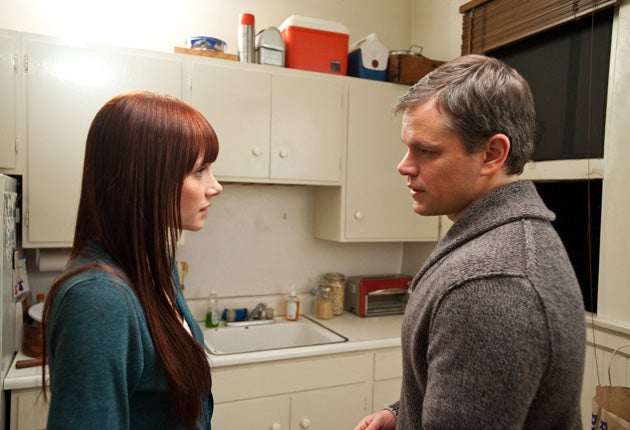First Night: Hereafter, Toronto Film Festival
Eastwood may be 80 – but latest film shows he's not stuck in his ways

Aged 80 Clint Eastwood has made a film that is completely different in style, tone and structure from anything he has delivered before. There is a surprisingly high use of hand-held cameras, three separate but interlocking stories take place in San Francisco, London and Paris, and there's also a blockbuster action sequence worthy of Steven Spielberg.
It opens in an unnamed holiday destination with Marie (Cécile De France), a well-known French TV journalist, going for a walk through a market. The camerawork is unsteady and probing before Eastwood decides to blow the audience out of the water with an amazing tsunami sequence. He captures the tremendous power of the wave as it sweeps on shore knocking Marie through town as buildings crumble and cars become dangerous flying missiles.
Marie has a near-death experience seeing a flash of the afterlife, depicted as a blinding white background with blurred figures. Returning to Paris, Marie becomes obsessed with writing a book about near-death experiences. De France steals the show with a performance that mixes stubbornness with vulnerability, and the movie is strongest whenever she is onscreen.
Matt Damon plays George, a blue-collar worker trying to build a new life in San Francisco. George wants to run away from a life working as a psychic, but his brother (Jay Mohr) and a girl he meets in a cookery class (Bryce Dallas Howard) insist he use his powers.
The Achilles' heel of the San Francisco segment is that Eastwood needs the action to end in London and so makes George, improbably, a fan of Charles Dickens. The screenwriter, Peter Morgan (The Queen), surely could have come up with something better than this trite device to get George to London for the denouement. The namechecking of Dickens is used by the film-makers as an excuse for the improbable amount of chance and coincidence that takes over the film.
It's in the London segment – that for huge parts could have been lifted out of a Ken Loach picture – where Eastwood is most uncomfortable. Young twins Marcus (Frankie McLaren) and Jason (George McLaren) try to keep the social services from taking them away from their drug-addict mother in a London estate.
Although he makes a better fist of representing London than Woody Allen did, the director falls into cliché. He shows iconic London locations even when they don't fit with the working-class aspect of the story. Happily, Eastwood doesn't try to take pity on the working class and soon the London tale is taken over by Marcus searching for a psychic who can help him communicate with his twin in the afterlife.
Despite the central theme, Eastwood doesn't try to make any big pronouncements on death and mortality. It seems that life, and Eastwood's directing career, just move on.
Join our commenting forum
Join thought-provoking conversations, follow other Independent readers and see their replies
Comments